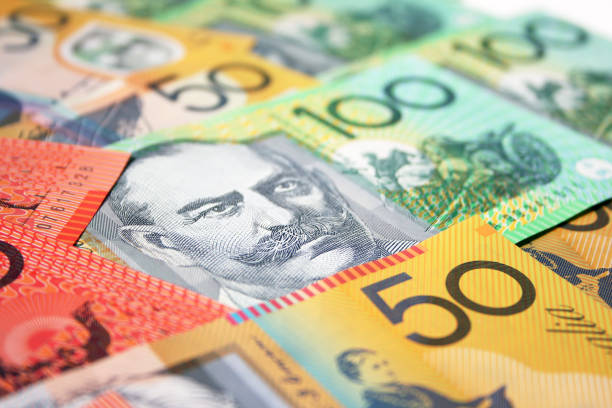
AUD/USD attracts heavy sellers on Friday and is pressured by a combination of factors.
The US-China trade war, the risk-off mood, and RBA rate cut bets weigh on the AUD.
The prevalent USD selling bias fails to support the pair as traders look to the US NFP.
The AUD/USD pair comes under intense selling pressure during the Asian session on Friday and retreats further from a nearly three-week high, around the 0.6400 neighborhood touched the previous day. The steep intraday downfall drags spot prices to a fresh daily low, around the 0.6245 region in the last hour, and is sponsored by a combination of factors.
US President Donald Trump unveiled reciprocal tariffs of at least 10% on all imported goods, with China facing 54% levies under this new regime. In response, China’s Commerce Ministry stated that it will resolutely take countermeasures to safeguard its rights and interests. This, in turn, raises the risk of a further escalation of a trade war between the world's two largest economies and turns out to be a key factor undermining the China-proxy Australian Dollar (AUD).
Meanwhile, Trump's sweeping trade tariffs sparked concerns about global economic growth and a recession in the US, which continues to weigh on investors' sentiment, which is evident from a sea of red across the global equity markets. This, along with speculations that a tariff-driven slowdown might force the Reserve Bank of Australia (RBA) to cut interest rates up to four times in 2025, further contributes to driving flows away from the perceived riskier Aussie.
The US Dollar (USD), on the other hand, struggles to capitalize on the previous day's modest bounce from the lowest level since October amid bets that the Federal Reserve (Fed) will resume its rate-cutting cycle soon. This, however, does little to lend any support to the AUD/USD pair. Traders now look forward to the release of the US Nonfarm Payrolls (NFP) report for a fresh impetus. Nevertheless, spot prices remain on track to register modest weekly losses.
US-China Trade War FAQs
Generally speaking, a trade war is an economic conflict between two or more countries due to extreme protectionism on one end. It implies the creation of trade barriers, such as tariffs, which result in counter-barriers, escalating import costs, and hence the cost of living.
An economic conflict between the United States (US) and China began early in 2018, when President Donald Trump set trade barriers on China, claiming unfair commercial practices and intellectual property theft from the Asian giant. China took retaliatory action, imposing tariffs on multiple US goods, such as automobiles and soybeans. Tensions escalated until the two countries signed the US-China Phase One trade deal in January 2020. The agreement required structural reforms and other changes to China’s economic and trade regime and pretended to restore stability and trust between the two nations. However, the Coronavirus pandemic took the focus out of the conflict. Yet, it is worth mentioning that President Joe Biden, who took office after Trump, kept tariffs in place and even added some additional levies.
The return of Donald Trump to the White House as the 47th US President has sparked a fresh wave of tensions between the two countries. During the 2024 election campaign, Trump pledged to impose 60% tariffs on China once he returned to office, which he did on January 20, 2025. With Trump back, the US-China trade war is meant to resume where it was left, with tit-for-tat policies affecting the global economic landscape amid disruptions in global supply chains, resulting in a reduction in spending, particularly investment, and directly feeding into the Consumer Price Index inflation.
* The content presented above, whether from a third party or not, is considered as general advice only. This article should not be construed as containing investment advice, investment recommendations, an offer of or solicitation for any transactions in financial instruments.


